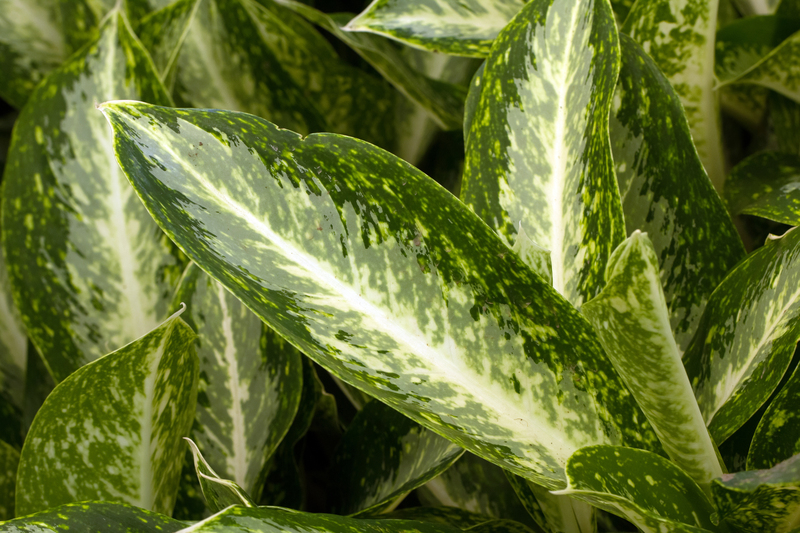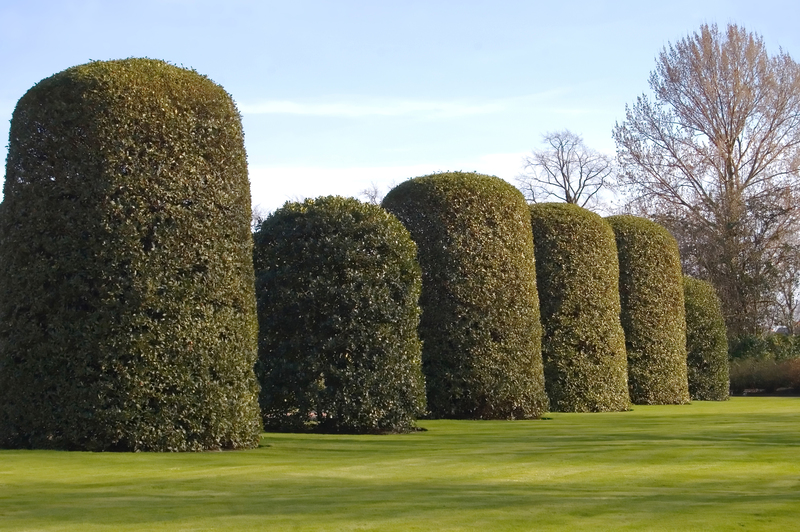Tropical Plants Perfect for the UK's Unique Growing Conditions
Imagine bringing the lush beauty of the tropics into your very own UK garden. With the UK's ever-evolving climate, it's now easier than ever to cultivate a range of tropical plants that not only survive but thrive in British soil. From eye-catching foliage to vibrant blooms, tropical planting creates a stunning oasis that instantly transports you to warmer climes. But which tropical plants are truly suited for the UK's unique growing conditions? In this comprehensive guide, we explore the top choices, their care requirements, and expert tips to transform your outdoor space.

Why Grow Tropical Plants in the UK?
The United Kingdom's climate has shifted noticeably over recent years. With milder winters and warmer summers, gardeners now have the exciting chance to experiment with a broader range of plants. Thanks to modern plant breeding, access to hardier cultivars, and protective gardening techniques, growing tropical plants in the UK has never been more achievable.
- Improve Garden Aesthetics: Bold foliage and vivacious colours create a unique, dramatic landscape.
- Attract Wildlife: Many exotic plants encourage pollinators like bees, butterflies, and birds.
- Create Private Retreats: Towering leaves and dense growth offer privacy and tranquility.
Best Hardy Tropical Plants for the UK Climate
To succeed with tropical garden plants in the UK, focus on species that offer exotic looks without sacrificing resilience to cold or unpredictable weather. Below, we've listed some of the best options for achieving a luxuriant, tropical effect year-round.
1. Trachycarpus Fortunei (Windmill Palm)
Known as the Windmill Palm, Trachycarpus fortunei is remarkably cold tolerant and one of the few true palms that thrive outdoors in the UK. With shaggy, fan-like leaves and an upright trunk, it brings instant tropical flair anywhere it is planted.
- Tolerates temperatures as low as -15?C (5?F)
- Prefers well-draining soil and sheltered spots
- Minimal pruning required; simply remove dead fronds
2. Fatsia japonica (Japanese Aralia)
Fatsia japonica is celebrated for its large, glossy, hand-shaped leaves. This evergreen shrub not only looks impressive all year but also copes well with cool temperatures and shade--a common garden condition in the UK.
- Hardy down to -10?C (14?F)
- Thrives in partial to full shade
- Tolerates urban pollution and sea breezes
3. Musa basjoo (Hardy Banana)
Bring the tropical banana plant look to your garden with Musa basjoo, the hardiest banana variety. It may not produce edible fruit in the UK's climate, but its huge, paddle-shaped leaves create an instant jungle effect.
- Down to -10?C (14?F) with winter protection for the stem
- Plant in sun to partial shade with rich, moist soil
- Mulch heavily in winter for best results
4. Dicksonia antarctica (Tree Fern)
Famed for its ancient lineage and architectural structure, the Tree Fern (Dicksonia antarctica) brings a primeval feel to shaded corners. Its upright trunk and feathery fronds add vertical structure and movement.
- Withstands light frosts (down to -5?C/23?F)
- Requires consistent moisture; mulch the crown in winter
- Thrives in dappled to full shade
5. Cannas
Cannas are prized for their bold, banana-like leaves and flamboyant flowers. Available in a variety of colours and leaf patterns, these rhizomatous perennials evoke the very essence of the tropics.
- Lift rhizomes for overwintering in very cold regions
- Grow in full sun with plenty of compost for best blooms
- Great for containers and borders alike
Additional Exotic Plant Options Suited for UK Gardens
Are you seeking something unique or looking to diversify your exotic garden plants in the UK? Consider these standout species that boast both nurture and spectacle with minimal fuss.
6. Tetrapanax papyrifer 'Rex' (Rice Paper Plant)
Known for gigantic, deeply lobed leaves, this fast-growing shrub adds instant drama. Its pale green foliage catches the light, and it can reach heights of up to 5 metres (16 feet) given space and warmth.
7. Hedychium (Ginger Lily)
Thanks to its fragrant, vibrant flowers, the Ginger Lily adds both exotic blooms and incredible scents in late summer. Try Hedychium gardnerianum for its lemon-scented yellow florets.
- Needs protection or lifting in harsh winters
- Does best in sheltered, moist, partly shaded sites
8. Melianthus major (Honeybush)
This dramatic architectural shrub sports serrated, silvery-blue leaves and unusual crimson flowers. It's semi-evergreen in the mildest areas, offering long seasons of exotic appeal.
- Likes well-drained soil in sun or part shade
- Cut back hard if frosted, and mulch for winter
- Pollinator-friendly and perfect for xeriscaping
9. Colocasia (Elephant Ear)
Instantly recognisable for their titanic leaves, Colocasias create extraordinary focal points in moist, warm locations. Varieties like 'Black Magic' offer striking purple-black foliage for added drama.
- Needs moist, humus-rich soils
- Perfect for bog gardens and containers
- Requires winter protection or lifting
Ornamental Grasses and Complementary Exotics
To complete your British tropical garden look, mix tropical effect plants with robust ornamental grasses and supporting structures. This creates more naturalistic, wildlife-friendly plantings and extends architectural interest into autumn and winter.
- Miscanthus sinensis: Tall, elegant plumes that move beautifully in the wind
- Pennisetum setaceum 'Rubrum': Rich, purple-tinted grasses for vibrant contrast
- Phormium tenax (New Zealand Flax): Sword-like, evergreen leaves in a range of colours
Cultivation Tips: Growing Tropical Plants in the UK's Variable Weather
Successfully growing tropical plants in the UK requires special attention to planting, feeding, and protection from unpredictable weather. Here are essential tips to ensure your exotic plants flourish:
Location and Shelter
- Choose sunny, south-facing spots for heat-loving plants
- Provide windbreaks or plant near walls to create microclimates
- Use cloches, horticultural fleece, or mulch in winter for tender specimens
Soil Preparation
- Enhance drainage with grit or sand for palms and succulents
- Boost fertility with well-rotted manure or compost for leafy exotics
- Check pH requirements--some like acid soil while others prefer neutral
Watering and Humidity
- Water regularly during heatwaves, especially for large-leaved plants
- Mist foliage to raise humidity in dry spells--just as it happens in the tropics!
- Mulch to conserve moisture and stabilise root temperatures
Feeding and Maintenance
- Apply slow-release fertilisers from spring through summer
- Deadhead flowers and remove browned leaves to encourage fresh growth
- Divide or repot container plants to prevent root binding
Overwintering Tender Tropical Plants
The UK's winters demand extra care for certain exotic species. Here's what you need to know:
- Lift and store tubers (such as with Cannas and Dahlias) in frost-free environments
- Wrap stems or crowns of tree ferns and bananas with horticultural fleece and mulch
- Move delicate tropicals indoors or into a greenhouse or conservatory if possible
Designing a Stunning UK Tropical Garden
A UK tropical garden isn't just about individual plants--it's about creating immersive spaces, intriguing layers, and harmonious combinations. Here are a few design tips:
- Layer Heights: Combine groundcovers, medium shrubs, and towering plants for a multi-tiered effect.
- Incorporate Water Features: Adding a small pond or fountain boosts humidity and reflects plant foliage elegantly.
- Blend Colours and Textures: Contrast rich greens with purples, variegated leaves, or bold flowers.
- Add Pathways and Seating: Winding paths and secluded benches turn your tropical garden into a private retreat.
Common Challenges with Tropical Plants in the UK (And Solutions)
No garden is without its hurdles. Here's how to handle typical problems when cultivating British exotic garden plants:
- Frost Damage: Protect at-risk species with fleeces or bring inside if possible.
- Pests: Slugs and snails love lush exotics. Use organic deterrents and keep foliage clear of ground contact.
- Waterlogging: Ensure good drainage, especially in heavy clay soils. Use raised beds or add grit to planting holes.
- Sunburn: Some broad-leaved tropics scorch in direct midday sun--provide dappled shade for sensitive types.

Where to Buy Tropical Plants in the UK
Specialist nurseries and online tropical plant suppliers abound in the UK nowadays, offering everything from mature palms to seed-grown curiosities. For best results, purchase from reputable sources, preferably ones providing acclimatised, hardier stock.
- Look for local garden centres with a tropical section
- Search for online retailers and order early in spring for the best selection
- Join gardening societies or tropical plant forums for advice and exclusive deals
Conclusion: Create Your Own Tropical Paradise--Right Here in the UK!
Growing tropical plants in the unique climate of the UK is both incredibly rewarding and more possible than ever. By selecting resilient varieties and using expert cultivation techniques, you can enjoy the beauty of the tropics from your own doorstep.
Remember, a successful British tropical garden is about both the right choices and smart gardening practices. With the plants and inspiration listed here, your garden can become a lush, exotic haven--no passport required.
Start experimenting, have fun with bold combinations, and soon you'll be enjoying a slice of paradise in your own backyard!